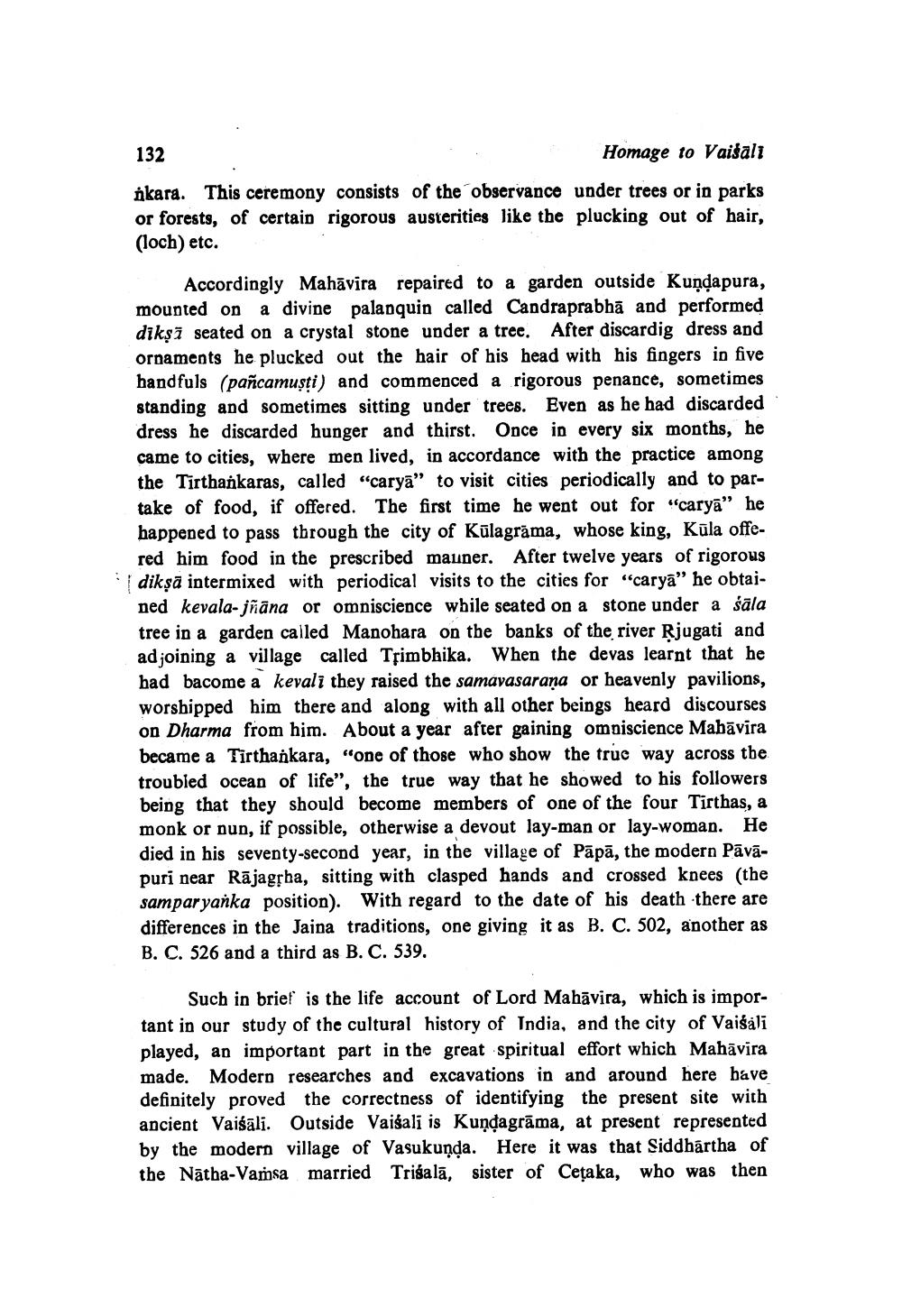________________ 132 Homage to Vaisali okara. This ceremony consists of the observance under trees or in parks or forests, of certain rigorous austerities like the plucking out of hair, (loch) etc. Accordingly Mahavira repaired to a garden outside Kundapura, mounted on a divine palanquin called Candraprabha and performed diksi seated on a crystal stone under a tree. After discardig dress and ornaments he plucked out the hair of his head with his fingers in five handfuls (pancamusti) and commenced a rigorous penance, sometimes standing and sometimes sitting under trees. Even as he had discarded dress he discarded hunger and thirst. Once in every six months, he came to cities, where men lived, in accordance with the practice among the Tirthankaras, called "carya" to visit cities periodically and to partake of food, if offered. The first time he went out for "carya" he happened to pass through the city of Kulagrama, whose king, Kula offered him food in the prescribed mauner. After twelve years of rigorous diksa intermixed with periodical visits to the cities for "carya" he obtained kevala- jnana or omniscience while seated on a stone under a sala tree in a garden called Manohara on the banks of the river Rjugati and ad joining a village called Trimbhika. When the devas learnt that he had bacome a kevali they raised the samavasarana or heavenly pavilions, worshipped him there and along with all other beings heard discourses on Dharma from him. About a year after gaining omniscience Mabavira became a Tirthankara, "one of those who show the true way across the troubled ocean of life", the true way that he showed to his followers being that they should become members of one of the four Tirthas, a monk or nun, if possible, otherwise a devout lay-man or lay-woman. He died in his seventy-second year, in the village of Papa, the modern Pavapuri near Rajagpha, sitting with clasped hands and crossed knees (the sampar yanka position). With regard to the date of his death there are differences in the Jaina traditions, one giving it as B. C. 502, another as B. C. 526 and a third as B. C. 539. Such in brief is the life account of Lord Mahavira, which is important in our study of the cultural history of India, and the city of Vaisali played, an important part in the great spiritual effort which Mahavira made. Modern researches and excavations in and around here have definitely proved the correctness of identifying the present site with ancient Vaisali. Outside Vaisali is Kundagrama, at present represented by the modern village of Vasukunda. Here it was that Siddhartha of the Natba-Vamsa married Trigala, sister of Cetaka, who was then




